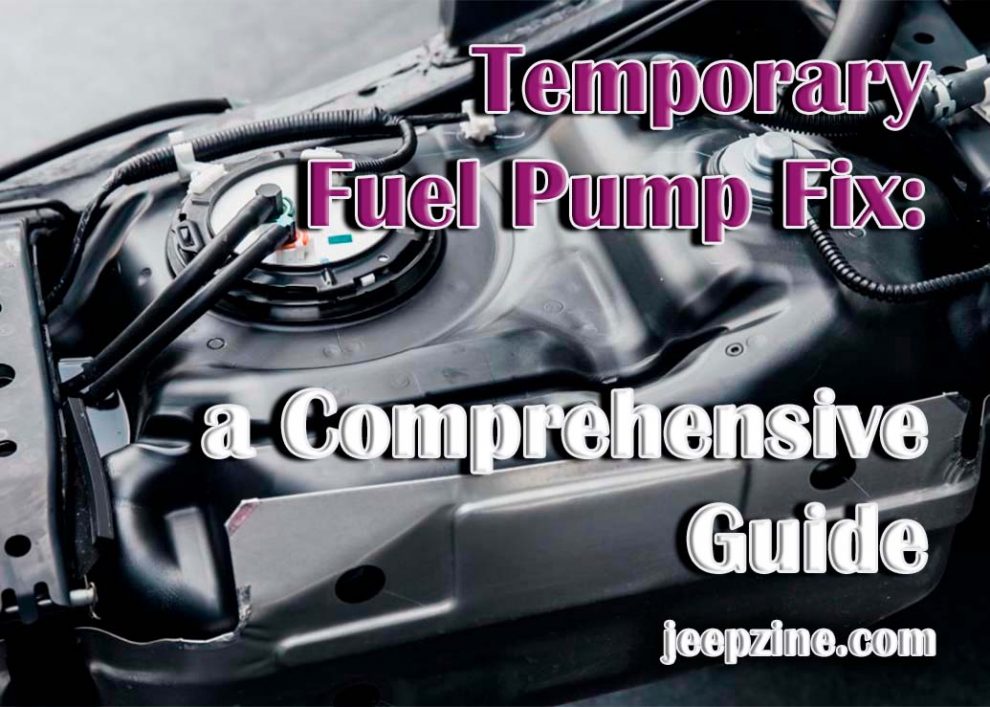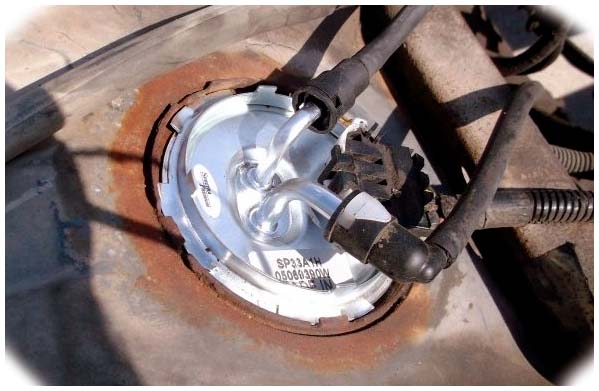The fuel pump is an essential part of a vehicle’s engine. Without the fuel pump, your vehicle won’t run. If your fuel pump fails, you can be stuck on the side of the road with no way to get home. Fortunately, you don’t have to wait for professional help or replace a new fuel pump to get back on the road. In this article, we’ll explain how to quickly and safely identify and temporarily fix a fuel pump problem in your vehicle.
Causes of a Fuel Pump Problem
There are several potential causes of fuel pump problems in a vehicle. Here are some common factors that can contribute to fuel pump issues:
-
Insufficient fuel pressure due to a clogged fuel filter: Over time, the fuel filter in your vehicle can become clogged with dirt, debris, and contaminants. This restricts the flow of fuel to the fuel pump, resulting in insufficient fuel pressure and potential fuel pump issues.
-
Fuel pump relay malfunction: The fuel pump relay is responsible for controlling the operation of the fuel pump. If the relay malfunctions or fails, it can disrupt the power supply to the fuel pump, causing temporary fuel pump problems.
-
Faulty wiring or loose connections: Wiring issues, such as frayed wires or loose connections, can interrupt the electrical circuit that powers the fuel pump. This can lead to intermittent fuel pump problems, causing fluctuations in fuel pressure.
-
Weak fuel pump due to age or wear: Over time, fuel pumps can become worn out or weakened, especially if they have been in use for a long time or are exposed to harsh conditions. A weak fuel pump may struggle to maintain consistent fuel pressure, resulting in temporary fuel pump problems.
-
Contaminated fuel affecting fuel pump performance: If your vehicle’s fuel system becomes contaminated with impurities, such as water, dirt, or rust particles, it can negatively impact the performance of the fuel pump. This can lead to temporary fuel pump issues until the contaminated fuel is addressed.
Symptoms of a Fuel Pump Problem
Symptoms of a fuel pump problem can include difficulty starting the vehicle, engine sputtering or jerking at high speeds, loss of power under stress (such as climbing hills or carrying heavy loads), decreased fuel efficiency, engine stalling or dying while driving, sudden and unexpected engine shutdown, a whining noise coming from the fuel tank area, and a strong odor of gasoline around the vehicle. Additionally, if the fuel pressure gauge readings are consistently low, it may indicate a fuel pump issue.
How to Fix a Fuel Pump Problem Temporary without Replacing It
If you suspect a fuel pump problem in your vehicle, the first step is to inspect the fuel filter for signs of clogging or contamination. If the filter is clogged or contaminated, replace it with a new one. If it appears to be in good condition, inspect all wiring and connections for any damage or loose connections that could be causing an interruption in the power supply. Also, check the fuel pump relay to make sure it is functioning properly. If you notice any damage or malfunctioning parts, replace them with new ones immediately as they could be causing your fuel pump problem.
Next, try using a fuel system cleaner to help remove built-up deposits from your vehicle’s fuel system that may be hindering performance and leading to intermittent fuel pump issues. After adding the cleaner, drive for at least 15 minutes so that it has time to circulate through the entire system before checking again for signs of a malfunctioning fuel pump.
Finally, if these methods don’t work, you can try replacing the spark plugs and spark plug wires in your vehicle as they can sometimes cause low performance and lead to temporary fuel pump problems. Additionally, if all else fails, consider adjusting the idle speed of your engine as this can sometimes help alleviate some types of fuel pump issues. At this point, you might be wondering, how long does it take to replace a fuel pump? Be sure to check out our comprehensive guide on this topic to get an estimate of the time and cost involved in a full fuel pump replacement.
Conclusion
A faulty fuel pump can leave you stranded on the side of the road, but there are several steps you can take to temporarily fix a fuel pump problem without needing to replace it. Always check all electrical connections, fuses, air filters, and fuel filters first when diagnosing your issue. If all else fails, use an emergency bypass switch or additives to clean and restore your fuel system for your vehicle to start running again.


 Insufficient fuel pressure due to a clogged fuel filter: Over time, the fuel filter in your vehicle can become clogged with dirt, debris, and contaminants. This restricts the flow of fuel to the fuel pump, resulting in insufficient fuel pressure and potential fuel pump issues.
Insufficient fuel pressure due to a clogged fuel filter: Over time, the fuel filter in your vehicle can become clogged with dirt, debris, and contaminants. This restricts the flow of fuel to the fuel pump, resulting in insufficient fuel pressure and potential fuel pump issues.


Add Comment